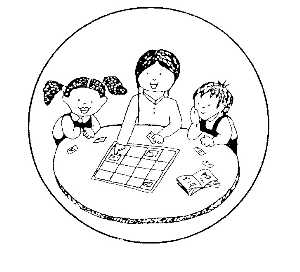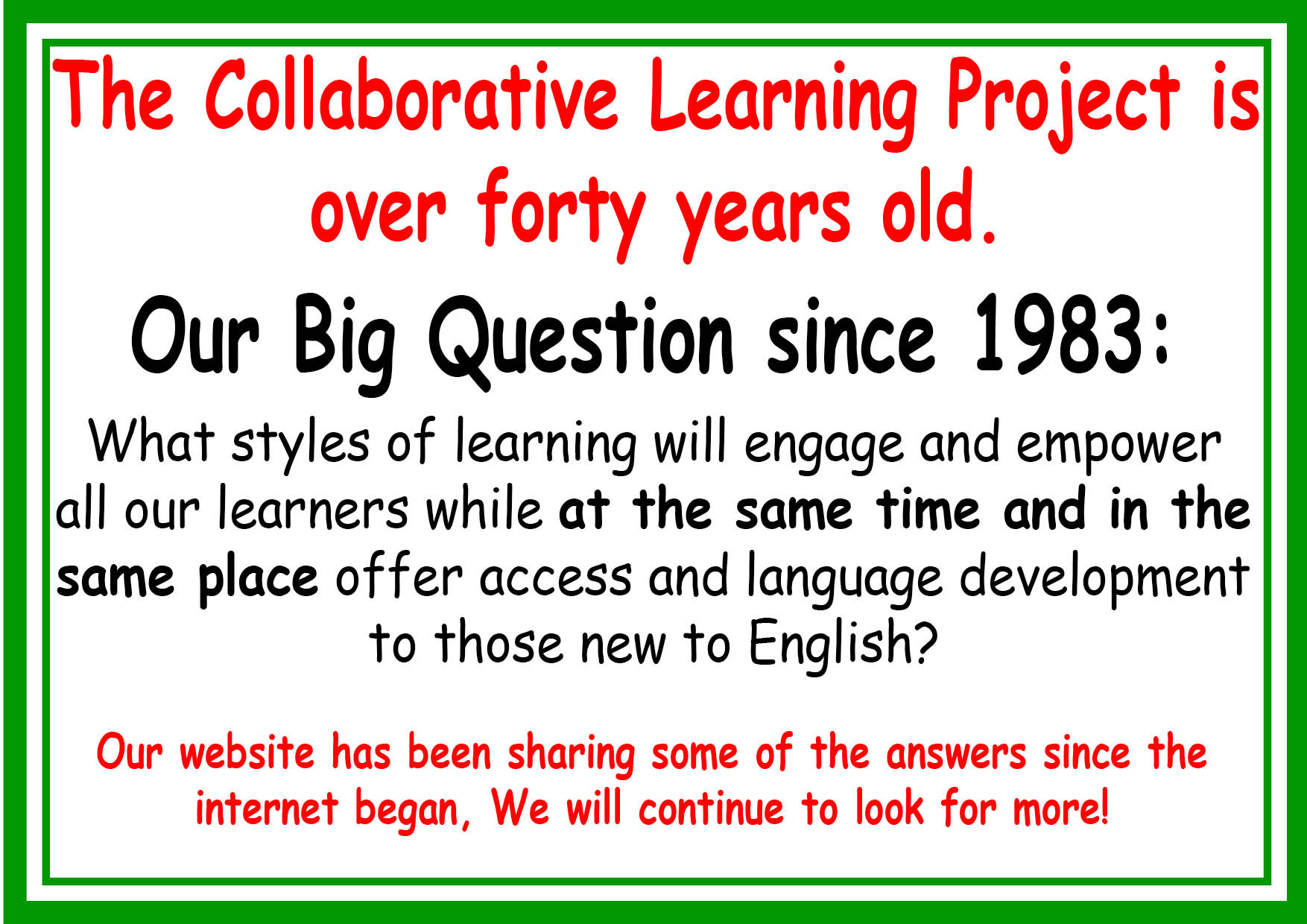
 |
Our aim is to provide examples of group talk activities that will benefit all children, while at the same time provide inclass, subject sustained opportunities for EAL pupils to learn English. |
A Brief History of the Collaborative Learning ProjectLink to research pages |
 |
I have from early in my career believed that teachers are more creative and develop more engaging and exciting resources when they plan and work collaboratively inside and outside the classroom. CLP has been fuelled by collaborative discussion. Education is conversation. This account is being updated and I will post a growing number of links that will take you to more detailed accounts . |
CLP was formally launched by Mike Hussey (ILEA Multicultural Inspector) in 1983 and funded by the Inner London Education Authority until it was shut down in 1990. Collaborative learning's roots go back much earlier. I worked at Westhill College of Education in Birmingham between 1966 and 1968 teaching English language and linguistics, history and English as an additional language. I encountered Andrew Wilkinson, the coiner of the word "oracy" and writer of "Spoken English". He was working at the University of Birmingham and ran the Birmingham equivalent of LATE. He shared his little book "Spoken English". Between 1968 and 1974 I continued to explore the role of spoken language in learning, while developing critical language programmes in the University of Buffalo and Hamilton College New York. I worked in teacher training and also ran teacher workshops on spoken language development at the State University of New York in Oneonta and Binghampton in the early 1970s. I was also involved in an interesting experiment in collaborative learning at Little Falls in the Mohawk Valley NY. Returning to the UK in 1974 I worked as an EAL teacher in Islington schools and as a tutor and counsellor for the Open University Language Development and Reading Diploma. I made contact with Susan Hart. We agreed to spend a year developing collaborative resources for a Year 7 integrated studies module and managed for a year to plan just ahead of the class! The Inner London Education Authority strongly supported and funded school focused professional development/action research so we were able to build on this work. It gave me the opportunity to work with different subject teachers in six London secondary schools testing out inclusive strategies. Our ILEA collaborative learning network became part of the teacher action research that led to the development of the National Oracy Project and the Language in the National Curriculum Project. Both the LINC and the Oracy projects were forcibly closed down for political reasons in 1993 and access to their resources denied. Colleagues, neverthless, continued to network informally. Ron Carter at University of Nottingham ensured that LINC resources continued to be available to teachers and researchers. Interestingly and paradoxically, our project became closely involved in the development and dissemination of the Department for Education Partnership Teaching Project with its focus on providing resources for the learning of English language within the mainstream curriculum and just as important, promoting teacher agency and teacher collaboration. The civil servants at the DofE later ensured, despite government priorities moving rapidly elsewhere, that we received further funding from the European Community plus the opportunity to share and run training through Comenius. Collaborative Learning has not received UK funding or support since 1989. However, it has survived and thrived because it was and remains a teacher owned network. Everyone is welcome to join. Activities to scaffold talk take time to make, but by sharing them and tweaking them, we hope to inspire others to work in similar ways. Sadly, the 1997 initiative on literacy failed to support oracy. Despite representations from us and many others, talk for learning was not made a priority in the literacy strategy and consequentally its survival in school has remained precarious. Opportunities for teachers to plan together are now very few and far between. Now that oracy is once again (for the third time!) slowly beginning to be recognised as a priority and recent research is even more supportive of its vital part to play in learning, we are expanding our network and increasing the number of activities online. We have a lot of activities in paper form developed in the 80s and 90s which still work well in the classroom. We are slowly updating these and making them available. Collaborative learning activities are designed for all learners in inclusive classrooms. They help to promote what is called today 'translanguaging'. We want to provide interesting and creative ways for children to develop exploratory conversations in classes, where many different languages are spoken, and where there are children learning English while learning everything else. Our aim is to provide examples of group talk activities that will benefit all children, while at the same time provide inclass, subject sustained opportunities for EAL pupils to learn English. Collaborative activities are vital for children learning English, and at the same time other learners benefit in many ways. Children new to English need exposure to visually stimulating collaborative talk activities in short sessions throughout their learning day. If ten minutes in every hour of the school day was talk rich, oracy would thrive. Children also need to develop good social relationships in school and these activities are designed to make it possible that everybody in the classroom at some point can work with everybody else on a regular basis. Many teachers are now using the strategies for creating classrooms where all the languages spoken and understood in their class can be used to support learning. We are now beginning to include these materials. The activities we make available can be used as they are, or better still, they can be adapted to fit into your planning. We also strongly hope they become templates for your own activities. Please don't just look at the activities available for your year group or subject area. All the activities can be easily adapted to any age group or any topic. When you have developed your own versions we hope you will share them; by either sending them to us, sending us a link, or posting them on similar sites. We cannot overestimate the value of joint construction. We believe that two teachers planning together are more than twice as creative. Schools that build this into their non-contact time create a happier and more purposeful environment for teachers and learners. For a more detailed analysis of collaborative learning, please go to our questions and answers page, which is currently being revised.We have also provided a little A5 booklet with a summary of our aims which is best printed out because we hope you might want to use it for working with other teachers and you can also access our research and bibliography page here. Our blog posts in Joined in Thinking also reflect our aims informally. Lists of free downloadable collaborative learning activities available on the site . They cover all curriculum areas and all key stages including foundation (early years). Can we encourage you to join our network of teachers (via our Work in Progress or newsletter pages) who are posting activities on this and linked sites. If you want to access the props, games and activities around picture books you no longer need to register with us, but please feed back your comments and suggestions.Last updated 6th May 2025 and will be revised again soon with more links. |